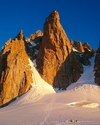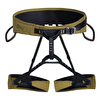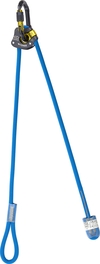Tomaz Humar after Annapurna South solo
Interview with Tomaz Humar after his solo ascent on 28 October of the South Face of Annapurna.

 1 / 17
1 / 17
Annapurna South Face: Tomaz Humar in the wind storm
 Tomaz Humar
Tomaz Humar
Much has been said about Tomaz Humar's latest ascent of the South Face of Annapurna (see news 19/11/2007). A recent article published by Alpinist.com states for example that Humar followed a line previously climbed in 2000 by a team of mountaineers, but no reference is made to their names, nationality nor other confirmation of their ascent. Similarly, the Italian mountaineering magazine Alp 213 published an article in 2003 stating that the route was climbed by three unidentified mountaineers (possibly French) who climbed without a permit to the summit ridge circa 1 km to the west of Roc Noir. The fact of the matter is that details are few and far between and that, if all are confirmed, Tomaz Humar would have "merely" carried out a solo ascent of the South Face.
In the interview published below, Tomaz does not discuss this detail: for information about his ascent he suggests reading the report published previously on PlanetMountain. It is clear (just as Alpinist.com affirms) that if the previous route was so "mysterious" then Humar could not have known about it. But these aren’t the details which interest Tomaz, who repeated on numerous occasions: "I carried out a climb for my soul." This is what interests him most. And to be honest, while giving the correct relevance to statistics (in truth increasingly difficult to verify) it seems tyo us that the profound motivations of an ascent are essential to attempt to get close to the heart and soul of mountaineering.
Ciao Tomaz, first of all congratulations! So... how are you, have you exited mentally from that immense wall?
After the climb I felt very calm. I felt good, but it it’s hard to feel the same emotions when you are back in the flat world, it's totally different. Here what becomes more important are numbers, statistics, deadlines... all of this seems to become more important than the soul of the climb.
How did your Annapurna South Face challenge come to life? What inspired you?
It came like a spark. I just followed my instinct. The thoughts became facts…
Can you describe the ascent stage, the times and the style (style, line of ascent, highpoint, descent)?
The main things are mentioned in the report that you already have.
The technical difficulties and most difficult moments?
What was really hard was to wait for good weather for a month. It rained and snowed all the time. I was waiting for one single chance. All three members, Dr. Anda Perdan, Jagat Limbu and myself called this expedition – “expedition of patience”.
The lower part was the most complicated one, to find the way through the rock pillar and the labyrinth of crevasses to the platform, where Jagat and I placed the bivouac 1 at 5800m. Then after B1, from the technical point of view, the climbing was not so difficult. It was the longest journey into myself. I think it is one of the safest of all Annapurna ascents.
I don't know exactly how long the ridge to East summit is. Due to the wind which hit me directly I was quite fast, I did the majority of the ridge from 8 to 10 a.m. The final section the of East Ridge took me a long time, almost 5 hours, because I broke off snow plates and I was in danger of falling down with one of them. During strong burst of wind I lay flat on the ground, moving only when the wind decreased – so as not to be blown off.
While descending night caught me, my head batteries stopped working, I hadn't eaten or drunk anything since 5 a.m. since the liquid in my camelbag had frozen an hour after leaving the bivouac, even though if it was protected in my down jacket. I waited on the ridge for moonlight to come and then started descending. I first lost my footprints, then I climbed down a delicate section of hard ice, and I eventually found my bivouac at 8.25 p.m.
The risks and difficulties of the south face... was it like you expected?
Alpinism without risk doesn’t exist, I think. The glacier was much more complicated then I had expected and so too the rock pillars. After B1 the climb was not technically difficult, but there were some sections of mixed climbing and some dangerous moments due to the seracs… but overall it was a safe climb.
If you had to explain this experience to a non-mountaineer, how would you describe it?
For me it is not only about climbing. It’s the game for life. It’s a voyage, a journey to discover myself. Before climbing I thought, meditated and wrote. Here are some of my thoughts from Base camp:
Excitement is the consequence of vibrations,
They generate a thought, and it develops into an idea,
The idea lives as long as taken care of in one's heart,
It depends upon truthfulness to us, watchfulness of our mind, life itself.
When we surrender to the idea, there are not any barriers, there is only a WAY.
Belief, courage, comprehension help us to reach the altar of sacrifice.
To live as a part of unity there must be lots and lots of US.
What comes cannot be written, cannot be read on the outside of time and place.
The bonds of earthly signs are vanishing into ether.
All that remains is the voyage, the voyage to the other side,
Where courage, belief, understanding are needed no more.
ALL THAT IS, IS YOU
ALL THAT YOU ARE, IS
In the past you paid great attention to communication: for example, you were one of the first who used the internet for your Dhaulagiri ascent. Here on the South Face of Annapura there was no communication at all, and 11 days after the ascent we still do not know the details... Was this on purpose? If so, why?
Circa 11 days… Immediately after the ascent I gave my climbing report to Elizabeth Hawley and Richard Salisbury, the authors of the Himalayan database in Kathmandu. But when I came home I needed to first spend time with the people I love, my children, girlfriend, relatives and friends.
Over the last 20 years, ever since alpinism has become my way of life, I have travelled to many different places and been on many expeditions. I’ve been supported by cameras on three occasions... I decide, completely on my own, for everything I do in life. Without any external pressure, any help. So I take full responsibility and advantages from this situation. We all have a possibility to choose. Live and let others live. Just as Buddhists like to say.
Perhaps you don’t know, for example, that last November I also went to the Himalaya. I climbed Mera Peak (6400+) in a few hours, and after a few days I climbed the North Face and West Ridge of Baruntse, 7220m in a day. It was climb for the soul, I liked it. It felt good. Last December I was in the Himalaya once again, trekking with my 76-year old father, my son Tomaz, 11, and daughter Ursa, 15. And I felt even better.
Did you want to prove something to someone with this ascent?
First and foremost I did it for my soul. But then I wouldn’t have agreed to this interview if I hadn’t wanted to communicate this ascent, for example.
The accident while you were working on your roof at home, then Aconcagua, then the misadventure on Nanga Parbat... how has the way you view and carry out mountaineering changed in these years?
I‘ve learnt that it isn’t important how many times you fall but that you always stand up, continue and look forward into the future. Every climb is a story in itself. You come back changed from each one. Your consciousness grows, this is the most important thing. And if you enjoy each journey, then all the rest is superfluous.
You have often underlined how important the mind is when confronting a big Himalayan project. How would you define your mountaineering, or better still, what is the mountaineering that you like? And where do you find the strength?
I believe that the inner strength is more important than the physical one. Because, we live yesterday’s thoughts today. Think, believe, think in advance and the future will come by itself.
What do you hope for your future?
I wish to always remain close to the mountains.
And for mountaineering and mountaineers
In recent years I’ve discovered that there are two extremes of alpinism.
Purists present their style to anyone as if it is the only one. They judge every different step as a deviation. If you are one step behind them, they judge such as: inferior, weak or something similar to trekking alpinism. If you dare to step further from this “pure style”, they judge you as being too ambitious, too populist, too spiritual or too irresponsible…
I don’t want to be misunderstood here: there is nothing wrong with the purist style if they really follow their own rules…But I feel there is a problem when purists make use of commercial benefits. In that moment their spirit dies and a “hermaphrodite”, or compromise, comes to life.
The other side of purism is what I would define as “raping style”. They don’t care too much about opinions, ethics, nature. They do it to reach a goal, the top, success.. they dare to use all means available. It resemble more a military style and not like we used to call “old classic Himalayan style”. If they can’t climb the face with 10 people for example, then they come with 20 and if these still don’t suffice then they increase the numbers further still. Not only climbers, also oxygen bottles, kilometres of ropes, heavy camps and tons and tons of equipment. What about the environment, ethics, respect towards mother nature?
My view about these two extremes is that both styles are not in harmony with the times we’re now living in. It would probably be better for all of us if we paid more attention to our own climbs instead of continuously complaining about those of others. I’m not sure if this is only my personal way of thinking. But if these two styles continue to increase and compete, manipulating each other, then it we’ll soon have a situation which Tiziano Terzani summed up in his book - Letters against war: “The first casualty, when war comes, is truth!”
In the interview published below, Tomaz does not discuss this detail: for information about his ascent he suggests reading the report published previously on PlanetMountain. It is clear (just as Alpinist.com affirms) that if the previous route was so "mysterious" then Humar could not have known about it. But these aren’t the details which interest Tomaz, who repeated on numerous occasions: "I carried out a climb for my soul." This is what interests him most. And to be honest, while giving the correct relevance to statistics (in truth increasingly difficult to verify) it seems tyo us that the profound motivations of an ascent are essential to attempt to get close to the heart and soul of mountaineering.
Ciao Tomaz, first of all congratulations! So... how are you, have you exited mentally from that immense wall?
After the climb I felt very calm. I felt good, but it it’s hard to feel the same emotions when you are back in the flat world, it's totally different. Here what becomes more important are numbers, statistics, deadlines... all of this seems to become more important than the soul of the climb.
How did your Annapurna South Face challenge come to life? What inspired you?
It came like a spark. I just followed my instinct. The thoughts became facts…
Can you describe the ascent stage, the times and the style (style, line of ascent, highpoint, descent)?
The main things are mentioned in the report that you already have.
The technical difficulties and most difficult moments?
What was really hard was to wait for good weather for a month. It rained and snowed all the time. I was waiting for one single chance. All three members, Dr. Anda Perdan, Jagat Limbu and myself called this expedition – “expedition of patience”.
The lower part was the most complicated one, to find the way through the rock pillar and the labyrinth of crevasses to the platform, where Jagat and I placed the bivouac 1 at 5800m. Then after B1, from the technical point of view, the climbing was not so difficult. It was the longest journey into myself. I think it is one of the safest of all Annapurna ascents.
I don't know exactly how long the ridge to East summit is. Due to the wind which hit me directly I was quite fast, I did the majority of the ridge from 8 to 10 a.m. The final section the of East Ridge took me a long time, almost 5 hours, because I broke off snow plates and I was in danger of falling down with one of them. During strong burst of wind I lay flat on the ground, moving only when the wind decreased – so as not to be blown off.
While descending night caught me, my head batteries stopped working, I hadn't eaten or drunk anything since 5 a.m. since the liquid in my camelbag had frozen an hour after leaving the bivouac, even though if it was protected in my down jacket. I waited on the ridge for moonlight to come and then started descending. I first lost my footprints, then I climbed down a delicate section of hard ice, and I eventually found my bivouac at 8.25 p.m.
The risks and difficulties of the south face... was it like you expected?
Alpinism without risk doesn’t exist, I think. The glacier was much more complicated then I had expected and so too the rock pillars. After B1 the climb was not technically difficult, but there were some sections of mixed climbing and some dangerous moments due to the seracs… but overall it was a safe climb.
If you had to explain this experience to a non-mountaineer, how would you describe it?
For me it is not only about climbing. It’s the game for life. It’s a voyage, a journey to discover myself. Before climbing I thought, meditated and wrote. Here are some of my thoughts from Base camp:
Excitement is the consequence of vibrations,
They generate a thought, and it develops into an idea,
The idea lives as long as taken care of in one's heart,
It depends upon truthfulness to us, watchfulness of our mind, life itself.
When we surrender to the idea, there are not any barriers, there is only a WAY.
Belief, courage, comprehension help us to reach the altar of sacrifice.
To live as a part of unity there must be lots and lots of US.
What comes cannot be written, cannot be read on the outside of time and place.
The bonds of earthly signs are vanishing into ether.
All that remains is the voyage, the voyage to the other side,
Where courage, belief, understanding are needed no more.
ALL THAT IS, IS YOU
ALL THAT YOU ARE, IS
In the past you paid great attention to communication: for example, you were one of the first who used the internet for your Dhaulagiri ascent. Here on the South Face of Annapura there was no communication at all, and 11 days after the ascent we still do not know the details... Was this on purpose? If so, why?
Circa 11 days… Immediately after the ascent I gave my climbing report to Elizabeth Hawley and Richard Salisbury, the authors of the Himalayan database in Kathmandu. But when I came home I needed to first spend time with the people I love, my children, girlfriend, relatives and friends.
Over the last 20 years, ever since alpinism has become my way of life, I have travelled to many different places and been on many expeditions. I’ve been supported by cameras on three occasions... I decide, completely on my own, for everything I do in life. Without any external pressure, any help. So I take full responsibility and advantages from this situation. We all have a possibility to choose. Live and let others live. Just as Buddhists like to say.
Perhaps you don’t know, for example, that last November I also went to the Himalaya. I climbed Mera Peak (6400+) in a few hours, and after a few days I climbed the North Face and West Ridge of Baruntse, 7220m in a day. It was climb for the soul, I liked it. It felt good. Last December I was in the Himalaya once again, trekking with my 76-year old father, my son Tomaz, 11, and daughter Ursa, 15. And I felt even better.
Did you want to prove something to someone with this ascent?
First and foremost I did it for my soul. But then I wouldn’t have agreed to this interview if I hadn’t wanted to communicate this ascent, for example.
The accident while you were working on your roof at home, then Aconcagua, then the misadventure on Nanga Parbat... how has the way you view and carry out mountaineering changed in these years?
I‘ve learnt that it isn’t important how many times you fall but that you always stand up, continue and look forward into the future. Every climb is a story in itself. You come back changed from each one. Your consciousness grows, this is the most important thing. And if you enjoy each journey, then all the rest is superfluous.
You have often underlined how important the mind is when confronting a big Himalayan project. How would you define your mountaineering, or better still, what is the mountaineering that you like? And where do you find the strength?
I believe that the inner strength is more important than the physical one. Because, we live yesterday’s thoughts today. Think, believe, think in advance and the future will come by itself.
What do you hope for your future?
I wish to always remain close to the mountains.
And for mountaineering and mountaineers
In recent years I’ve discovered that there are two extremes of alpinism.
Purists present their style to anyone as if it is the only one. They judge every different step as a deviation. If you are one step behind them, they judge such as: inferior, weak or something similar to trekking alpinism. If you dare to step further from this “pure style”, they judge you as being too ambitious, too populist, too spiritual or too irresponsible…
I don’t want to be misunderstood here: there is nothing wrong with the purist style if they really follow their own rules…But I feel there is a problem when purists make use of commercial benefits. In that moment their spirit dies and a “hermaphrodite”, or compromise, comes to life.
The other side of purism is what I would define as “raping style”. They don’t care too much about opinions, ethics, nature. They do it to reach a goal, the top, success.. they dare to use all means available. It resemble more a military style and not like we used to call “old classic Himalayan style”. If they can’t climb the face with 10 people for example, then they come with 20 and if these still don’t suffice then they increase the numbers further still. Not only climbers, also oxygen bottles, kilometres of ropes, heavy camps and tons and tons of equipment. What about the environment, ethics, respect towards mother nature?
My view about these two extremes is that both styles are not in harmony with the times we’re now living in. It would probably be better for all of us if we paid more attention to our own climbs instead of continuously complaining about those of others. I’m not sure if this is only my personal way of thinking. But if these two styles continue to increase and compete, manipulating each other, then it we’ll soon have a situation which Tiziano Terzani summed up in his book - Letters against war: “The first casualty, when war comes, is truth!”
Note: Tomasz Humar select ascents
2005 - Cholatse (6.440 m)
2003 - Aconcagua (6.960 m) S Face
2002 - Shishapangma (8.026 m) NW Face
1999 - Dhaulagiri I (8.167 m) N Face
1999 - Dhaulagiri I (8.167 m) S Face
1998 - El Capitan "Reticent wall"
1997 - Pumori (7.165 m) SE Face
1997 - Labouche east (6.119 m) NW Face
1996 - Ama Dablam NE Face
1996 - Bobaye (6.808 m) NW Face
1996 - Nuptse W2 (7.742 m) W Face
1994 - Ganesh V (6.986 m) SE Face
1994 - Annapurna (8.091 m) N Face
2005 - Cholatse (6.440 m)
2003 - Aconcagua (6.960 m) S Face
2002 - Shishapangma (8.026 m) NW Face
1999 - Dhaulagiri I (8.167 m) N Face
1999 - Dhaulagiri I (8.167 m) S Face
1998 - El Capitan "Reticent wall"
1997 - Pumori (7.165 m) SE Face
1997 - Labouche east (6.119 m) NW Face
1996 - Ama Dablam NE Face
1996 - Bobaye (6.808 m) NW Face
1996 - Nuptse W2 (7.742 m) W Face
1994 - Ganesh V (6.986 m) SE Face
1994 - Annapurna (8.091 m) N Face
| Links Planetmountain | |
| News Humar | |
| Links Expo.Planetmountain | |
| Expo C.A.M.P. | |
| Links www | |
| www.asian-trekking.com | |
| www.humar.com | |
Latest news
Expo / News
Expo / Products
Fast hiking shoes by AKU
Light and flexible hiking shoeit
High-end one-buckle climbing harness combining comfort and light weight.
Climbing rope bag Petzl Split
Adjustable lanyard for mountaineering and rock climbing by Climbing Technology
Down sleeping bag for multi‑season trekking.



 Copia link
Copia link





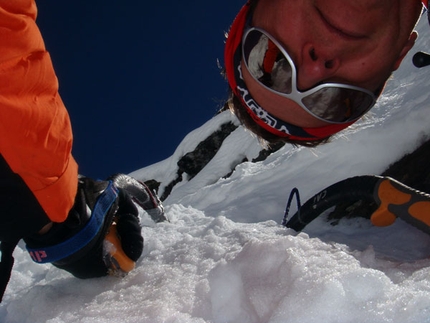
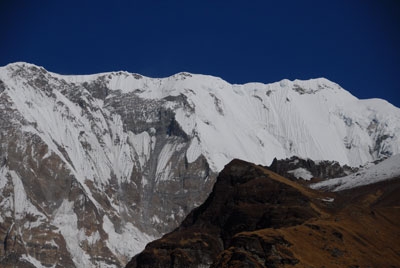
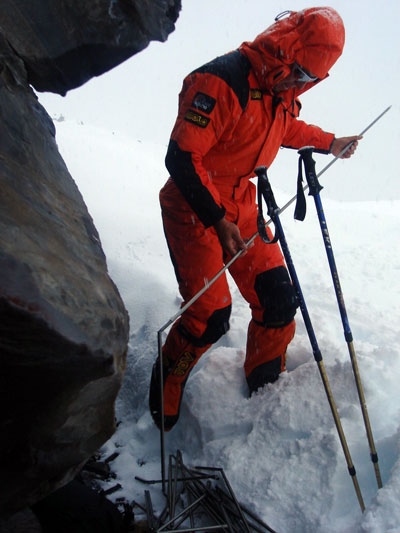
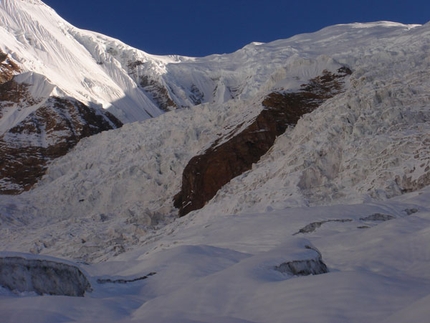
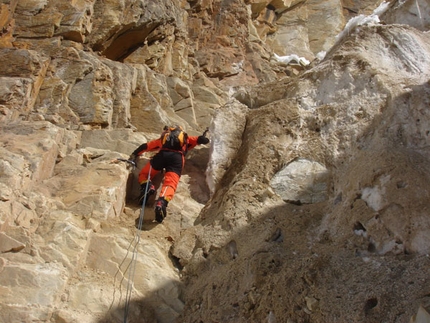
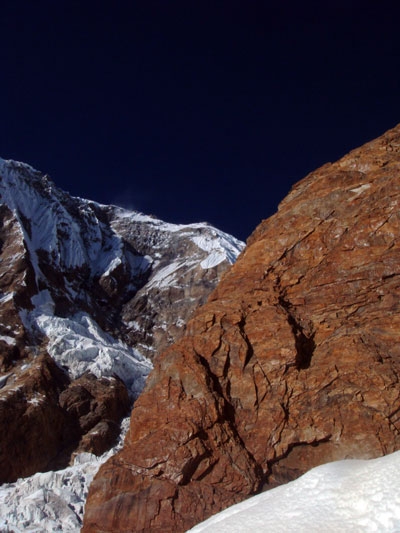
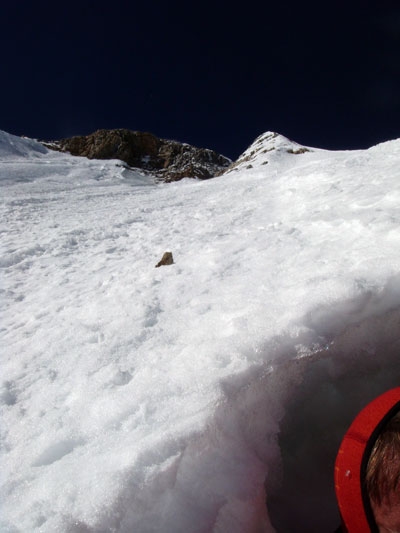
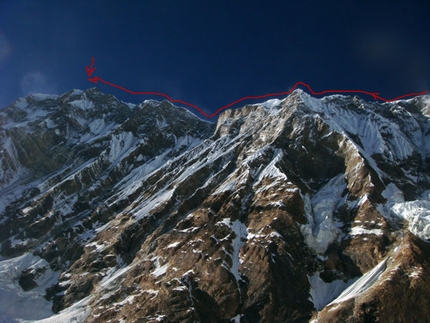
 See all photos
See all photos

